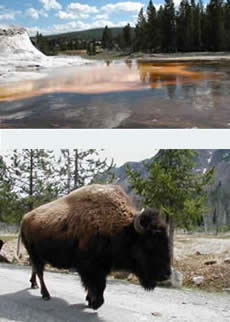USA PEOPLE SEARCH BY NAME!
- ❖ Current Address
- ❖ Phone Numbers
- ❖ Criminal Records
- ❖ Public Records
- ❖ Neighbors
- ❖ People's Age
- ❖ Property Ownership
- ❖ And Much More
Sun, 27 Dec 2015
Yellowstone National Park's First Explorer
The Yellowstone National Park is a complete and utter wonderland. The area spans across miles of wilderness with geysers scattered across the land. It is home to animals of all kinds; from the mighty grizzly bears to the peaceful elks and bison herds. An intact natural ecosystem, it is where the famous Old Faithful and several other geysers has been under preservation since the discovery of the park.
Gustavus Doane's Poetic Letter
Created in 1872, Yellowstone was not a park then but a vast flora and fauna of wild lands surrounded by geysers. Ever since Yellowstone was discovered it had been under conservation and preservation. Not one but many were responsible for the making of Yellowstone National Park.
Gustavus C. Doane is among the first people to explore the Yellowstone National Park before it came to be. Although he was not the discoverer of the place, he made a significant contribution in the creation of the park. Gustavus Doane went on an expedition with others in 1870 around the Yellow River and in 1871 he wrote a very detailed description of the place. This letter emphasized the wonders and natural phenomenon in Yellowstone and was sent to the Secretary of War. It was by this poetic letter that the U.S. Congress finally enforced the idea of a national park.
The Corps of Discovery Close Encounter
The Native Americans were the first to know about the existence of Yellowstone. It was not known by that name then but was described as a great lake by the Indian tribes.
The very first Euro-American people to come close to the Yellowstone National Park were Captain Meriwether Lewis and Captain William Clark. It was in the early 1800s when both captains travelled back and forth around the Yellowstone area. During that time President Thomas Jefferson had visions of expanding the Americas from one coast to another.
Lewis and Clark lead parties to explore areas; the party of William Clark, called the Corps of Discovery, rode down the Yellowstone River Valley by a canoe. It was however, a young John Colter whom was part of the Corps of Discovery that made expeditions that almost completely visited the whole of Yellowstone.
The Expeditions of John Colter
During Colter's expeditions he met several people, some of which became his partners and were among the first people to explore the Yellowstone National Park. Although the Corps of Discovery led by Lewis and Clark had journeys around the area, none was ever led through the Yellowstone. It was the curiosity and zest of Colter that made its existence known to others. He is the first Euro-American to ever view the Yellowstone Lake.
After the discovery of John Colter, other explorers followed him through the Yellowstone. More expeditions were made and by 1824 the Jackson Hole was traversed including Yellowstone Park's south boundary by Jim Bridger and Jedediah Smith.
Today's Two Ocean Pass was explored again in 1836 by Jim Bridger with a different companion named Osborne Russell. Others came after who attempted to explore the area but were only able to trek the outer boundaries of the Yellowstone.
It was in 1869 that three people; William Peterson, David Folsom, and Charles Cook (Cook–Folsom–Peterson Expedition) successfully explored the area. The following year was the mark of Gustavus Doane's historical expedition. He led the Washburn party through the area and made the famous poetic letter that helped in the making of Yellowstone National Park.
Geological Survey of Ferdinand Hayden
Ferdinand V. Hayden, an American geologist is among the first people to explore the Yellowstone National Park. He was also among those who attempted to explore Yellowstone but failed in the early 1860s.
It was only in 1871 that he managed to make his geological. Hayden was sponsored by the government at that time and had a larger team of geologists. Hayden made an intensive report that influenced the withdrawal of Yellowstone region from public auctions.
He believed, along with many others, that the Yellowstone area deserved to become more than just a recreational park. Hayden feared that Yellowstone would suffer the same fate as the Niagra Falls where people delighted in but failed to preserve the natural beauty of the wonder. Hayden and many scientists intended to have the area conserved and preserved by all means.
Ever since then the Yellowstone National Park has been the source of many scientific discoveries regarding ancestral and geological history. The Act of Dedication Law was signed by U.S. President Ulysses Grant in 1872, the law which led to the making of Yellowstone National Park.
Read:
The Original Dalton Brothers
Nathaniel Turner And The Slave Revolt
Jamestown, The First Permanent Settlement In The USA
Sacagawea Showed Lewis and Clark The Way
The Vikings Came To America Long Before 1492
The History of Beer in the USA
A History of the European Immigration
The Wild West Period - The Golden Age Of America

